heroball
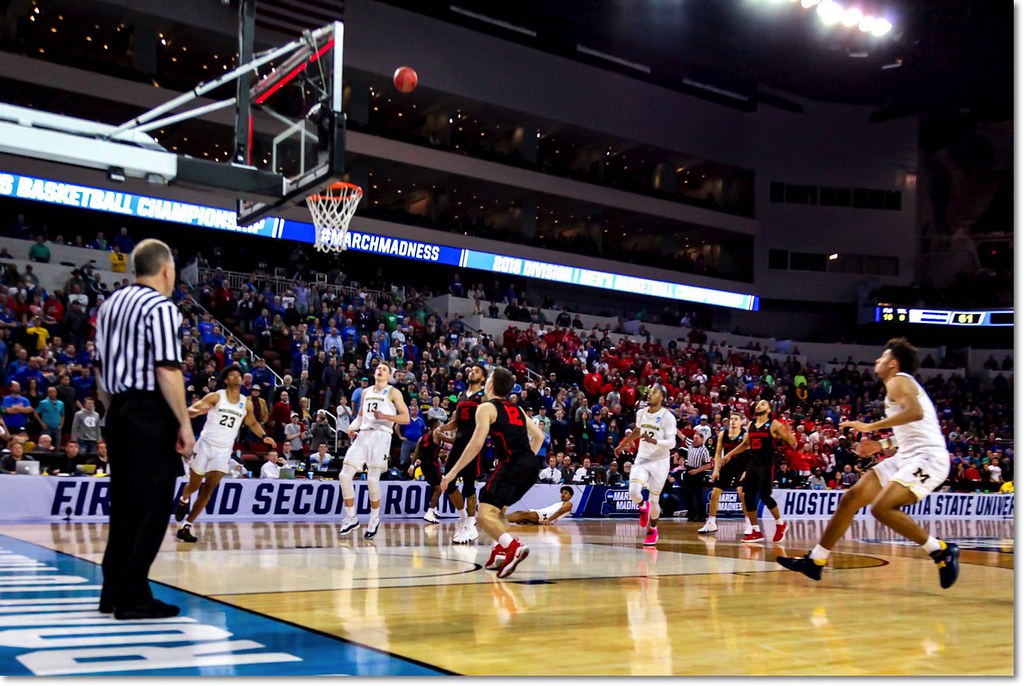
Yes, this still somehow went in. [JD Scott]
Another tournament week, another multi-part mailbag. This one contains the questions about/inspired by Jordan Poole's buzzer-beater. Yes, I'm as shocked as you are that I sorted them this way. Jump in!
A Free Pass
Hey Ace - Are there any statistics showing whether teams should guard the inbounder in late game situations like against Houston? On the surface, it seems like a huge mistake to let Livers inbound the ball to halfcourt so easily.
-Pat
While I don't remember seeing such a study and can't find stats on it, I agree that Kelvin Sampson erred in allowing Isaiah Livers to get a clean look on the final play. An opposing staff can only scout so many games, but I'm guessing Houston's coaches didn't get to the Maryland tape.
Even though the outcome of the plays were wildly different, Michigan's game-winners against the Terps and Cougars came on nearly identical setups: Livers hitting Muhammad-Ali Abdur-Rahkman with a baseball pass from his own baseline out of a timeout. Neither opponent elected to guard the inbounder even though Livers wasn't allowed to run the baseline.
Maryland's Mark Turgeon explicitly tried to set up his defense to prevent anyone from catching a pass while running towards the Terps basket. Here's how that went:

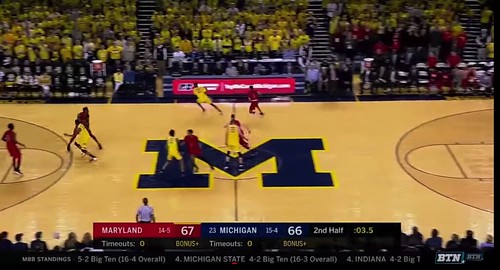
If you forgot, MAAR nearly got all the way to the hoop, drew a foul, and drained both free throws with the ruthless calm of a serial killer.
Here was Houston's setup:
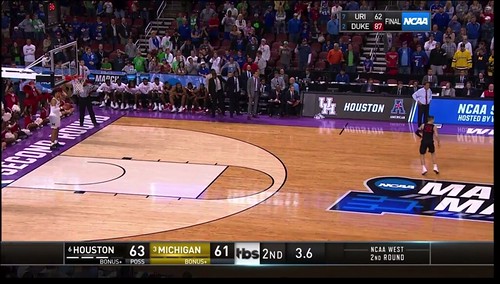
While the Cougars were more successful in preventing a long pass to a guy on a dead run, they still allowed MAAR to catch the ball a fair distance up the court without any immediate pressure, which let him get upcourt in a hurry even though they had two defenders waiting.
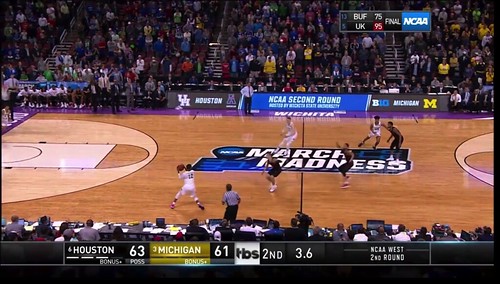
Houston forced a tough shot, but it was still a catch-and-shoot look from a not-entirely-unreasonable distance by a shooter who had the time and space to square up to the basket. That's not a prayer, at least if you're Jordan Poole; ideally, the defense is forcing teams into prayers in that situation.
I don't think having the extra defender back is worth whatever added coverage it provides. Again, Livers can't run the baseline in either of these cases, and he's being asked to throw accurate passes far downcourt. Stick a big man on him and that becomes a great deal more difficult to execute. A tougher pass for Livers means either MAAR has to run farther back to the ball—losing precious time and momentum—or risk never completing the pass at all on a deeper attempt. Beilein's now gushed twice this season about Livers being able to throw pinpoint baseball passes; that's a lot harder to do with a basketball when you're not getting the same amount of space as an actual baseball pitcher.
Recency and confirmation biases may be playing a factor, but I rarely find the fifth defender that stays back even comes into play that often. For the offense, the downside of having the entire court to cover can also be an upside—your players can sprint full-out, which never happens for more than a couple steps in a halfcourt situation. Even with the extra man back, it's hard to keep a team from hitting the player they want—usually after running him through a couple screens—and that can lead, as in Maryland's case, to getting a bunch of players uselessly stuck behind the play while a fast man runs past them.
Houston more productively spent their extra player on MAAR and he still had an easy pass to make because of the amount of space he had on the catch. They did a much better job on the back end than Maryland by preventing MAAR from either driving or pulling up. They still got burned. I thought everyone learned this lesson in 1992: guard the dang inbounder.
Or don't, actually. Coaches not doing that is working out pretty nicely for my life.
[Hit THE JUMP for my top-five last-shot-makers of the Beilein era, an evil question that was also the most popular, and MAAR's overlooked move.]
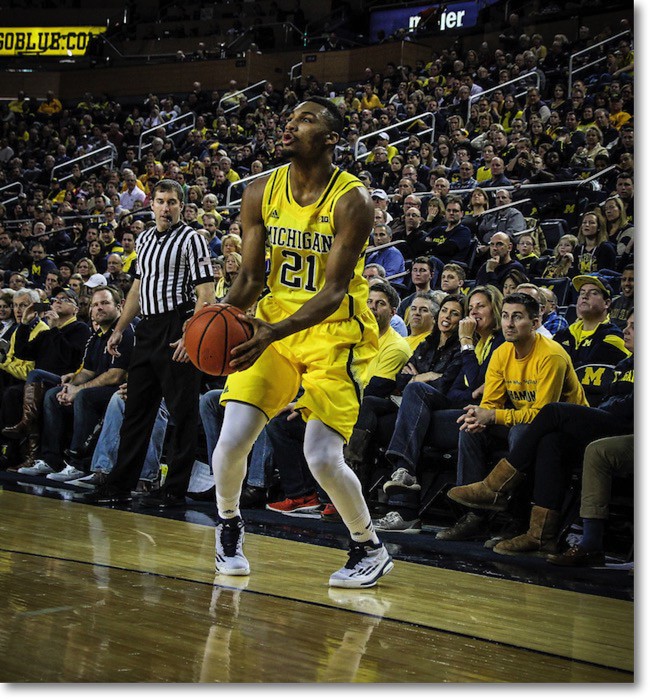
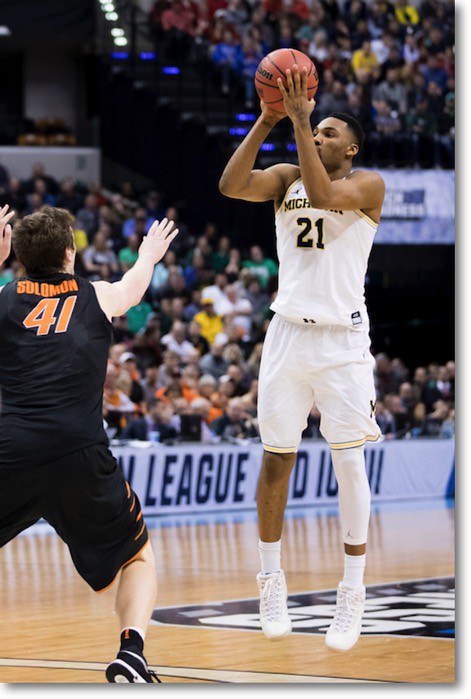
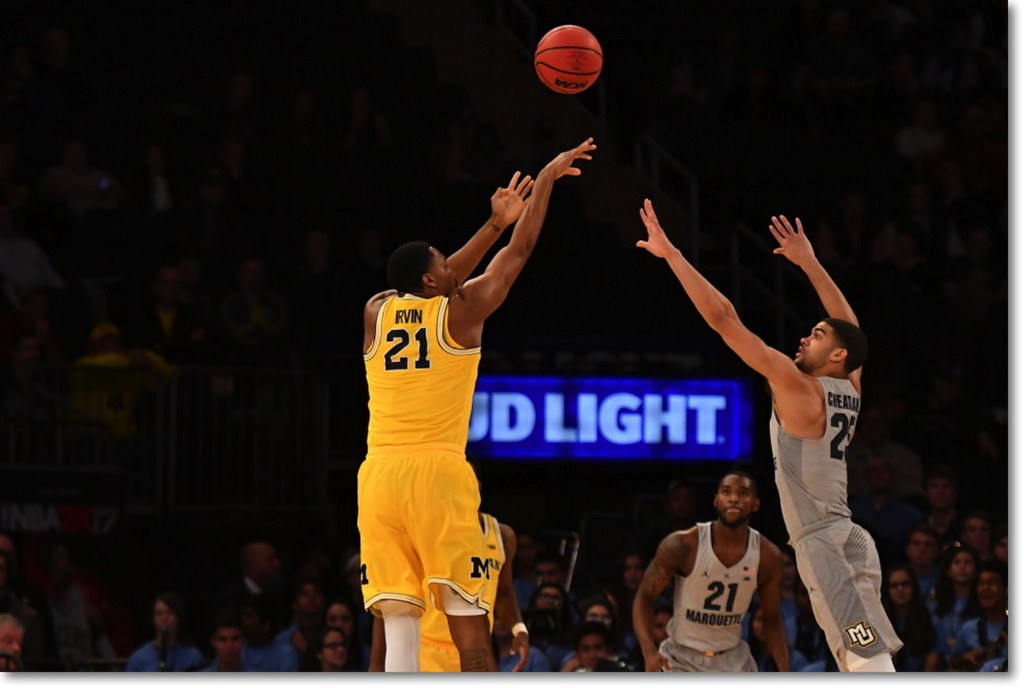
Unorthodox. [Eric Upchurch, Marc-Gregor Campredon, Joseph Dressler]
Zak Irvin made six hundred field goals at Michigan. Each one seemed like a minor miracle.
I say this out of admiration. Pick up a basketball, head to the park, and try to replicate Irvin's shot. To do this, stand pigeon-toed while holding the basketball low and in front of you like a hot casserole just out of the oven; with your hands on the sides of the ball, swing it above your head on a path that passes by your left front pocket; as the ball rises in front of your face, rotate your hands so your shooting hand is under the ball; lock your elbows at a 90-degree angle; flick your wrist to release at the apex of your jump; hold your follow-through at a 45-degree angle. It'll look something like this:
You won't make it. Certainly not the first time, and probably not on the hundredth, either.
Perhaps it shouldn't have been a surprise that Irvin's career was for a long time defined by its inconsistency.
After Irvin's freshman year, it was difficult to keep expectations in check. On a 2013-14 team loaded with NBA talent, he excelled in the role of unabashed gunner off the bench. He hoisted 146 three-pointers and made 43% of them, seamlessly replacing Nik Stauskas, who'd become the team's star, as the instant offense freshman who promised a whole lot more in the future.
Irvin's game, however, was extremely limited. He recorded all of 13 assists in 37 games. His defensive rebound rate was lower than Spike Albrecht's. Nearly 75% of his shots came from beyond the arc; according to hoop-math, all ten of his makes at the rim were assisted.
[Hit THE JUMP.]
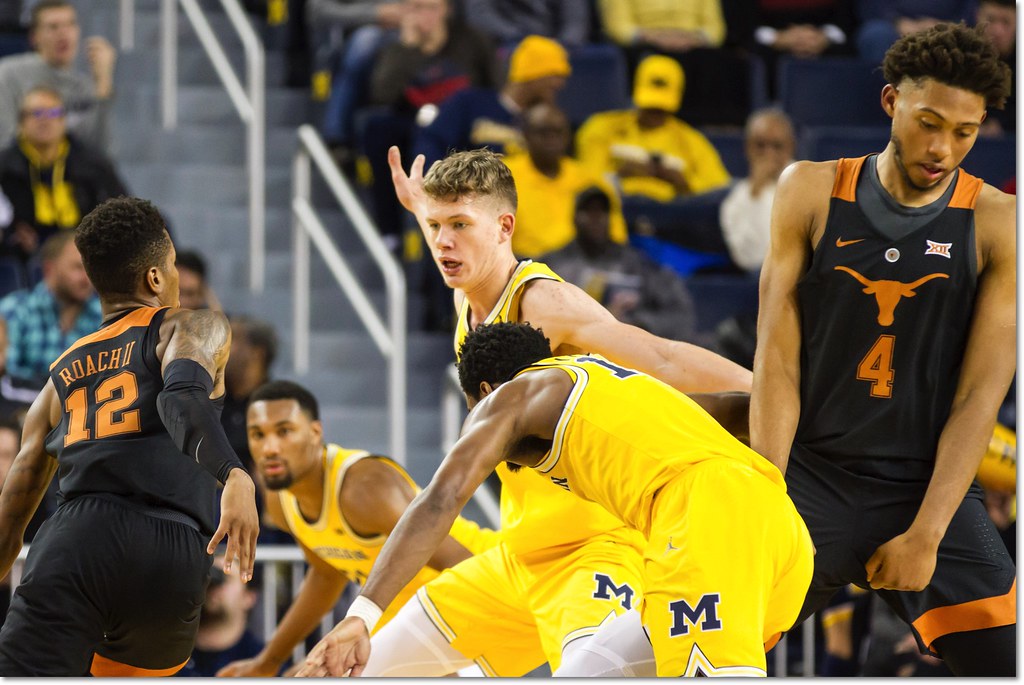
Moe Wagner is earning John Beilein's trust on defense. [Marc-Gregor Campredon]
The Block Is Hot
I wasn't planning to do another Basketbullets before the UCLA game until I sat through John Beilein's presser after Tuesday night's win over Texas. Beilein is coming around to the idea that Moe Wagner is, in fact, his best all-around big man, and a big reason for that showed itself on the game's deciding play:
We got done what we had to get done. Moe’s block at the end was big. Moe’s blocking shots really for the first time in his life. His first blocked shots last year I think were in the Tulsa game. He’s learning when he should leave his feet, when he shouldn’t, to be a bigger presence at the rim. Really pleased with his development, as with DJ.
Beilein's memory is pretty good: Wagner had two blocks in last season's late-November win over Charlotte, then didn't record another before his four-block breakout against Tulsa in the NCAA tournament. Wagner has always possessed the requisite length and athleticism to be a good rim protector; now he's developing the necessary timing to challenge and alter shots without picking up fouls. That was on full display with Wagner's game-sealing block, which came after he and DJ Wilson seamlessly executed a switch. Wagner stayed vertical and waited until the last moment before swatting the ball away:
After recording blocks in two of his 29 appearances last year, Wagner has six in nine games. DJ Wilson has 14. Those two almost entirely account for Michigan's team block rate rising from 6.1% (308th nationally) last season to 8.4% (189th) this year, the team's highest mark since Beilein's first season, when Ekpe Udoh had 92 of the team's 160 blocks. Incidentally, that's the last time Michigan started two bigs. While there's still plenty of room to improve, those two have added a new dimension to the defense.
[Hit THE JUMP for Billy Donlon's clutch veto, a look at the game-winning bucket, and more.]
61